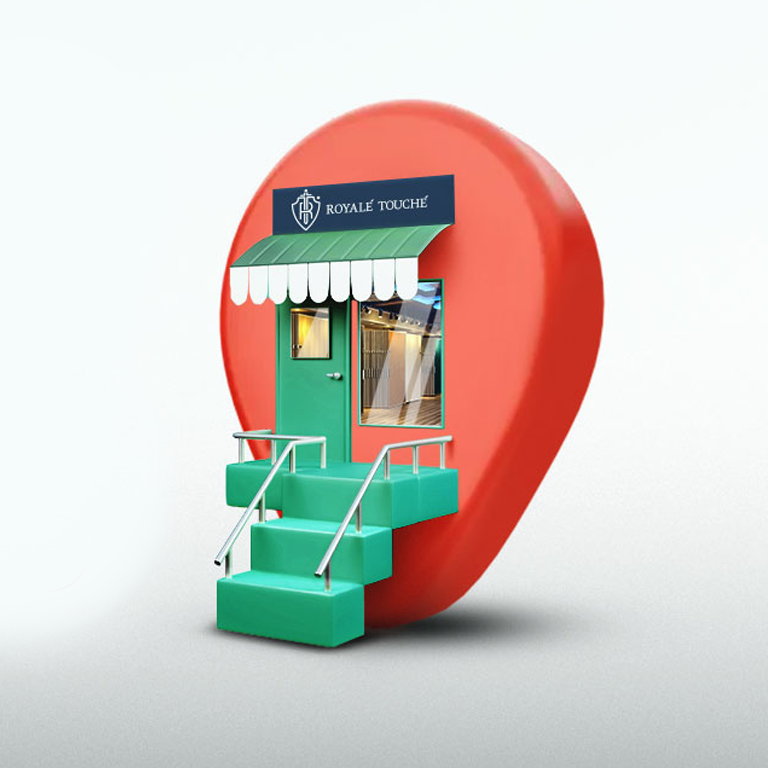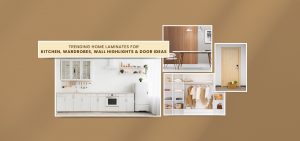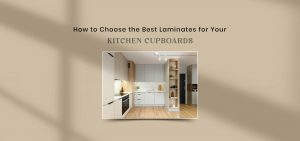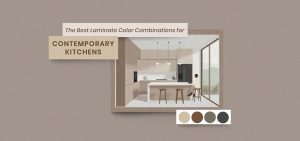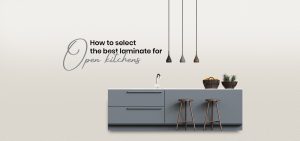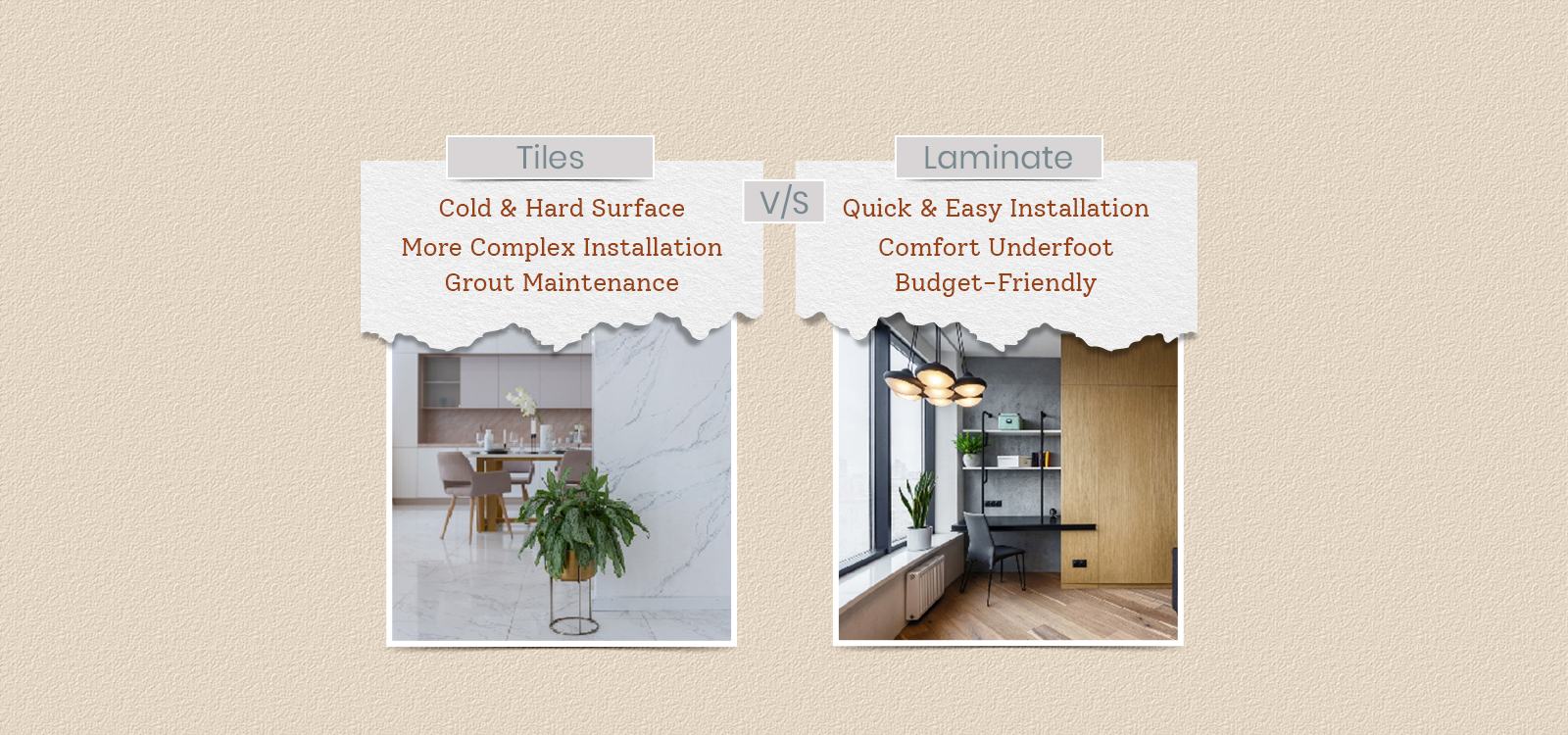
Laminates vs Tiles: What Should You Pick for Your Interiors?
Choosing the right surface material for your home or office interiors is more than a matter of style. It directly impacts functionality, durability, and cost-efficiency. Among the most popular materials for surfaces like floors, walls, kitchen backsplashes, and furniture exteriors are laminates and tiles. Both offer distinct advantages, and your choice depends on several factors including design preference, usage, budget, and maintenance needs.
Let us see the advantages and disadvantages of laminate vs tiles debate and why Royale Touche laminate are preferred by most, particularly the new generation water resistant laminates for a contemporary, unified look.
What Are Laminates and Tiles?
Laminates are materials used as layers on plywood and are produced by combining several layers of resin and paper under high pressure. Laminate sheets contain a top layer of protection, a core layer, and a print layer, which after combining yield a hard, decorative sheet. Laminate sheets are applied to wardrobes, cabinets, wall paneling, and floors. There are water-resistant laminates that can also be used in kitchen and bathroom fittings as well.
Tiles, however, are generally manufactured from ceramic, vitrified material, or natural stone. They are subjected to high-temperature firing to form tough, water-repellent surfaces. Tiles are used extensively for flooring, walls, and moist spaces such as bathrooms and balconies.
While the two materials are used for both decorative and functional purposes, their uses and merits differ depending on position, condition, and aesthetic purpose.
Appearance and Variety
In matters of design versatility, laminate sheets provide a greater selection of options compared to conventional tiles. Laminates can be made to resemble:
- Wood grain
- Stone texture
- Marble and granite
- Fabrics
- Metallic shine
- Abstract and creative patterns
With the use of sophisticated digital printing devices, laminates can also be individually designed to suit individual preferences or brand styles for use in commercial establishments.
Tiles can be found in various textures and finishes but are more inclined towards earth tone coloring, glossy look, and ceramic or stone appearance. Tiles look stiffer or cold compared to the warmth and imagination that laminates can provide.
Seeing the difference between laminate vs tiles, we see laminates come in more variety and are more versatile and stylish.
Installation and Ease of Use
Installation time and convenience also vary widely between the two materials.
Tiles need cement-based adhesives, accurate levelling, and tend to take a longer time to set. Grouting is also a time-consuming process and can discolor or get damaged with time, particularly in wet areas.
By comparison, laminate sheets can be easily installed with adhesives on plywood, MDF, or wood surfaces. Grouting is not needed, and the sheets are light in weight, thus easy to maneuver and fit even on curved or vertical surfaces.
For individuals who want to finish a renovation project fast, with less dust or noise around, laminates are an easy choice.
Water Resistance and Moisture Control
Tiles were commonly preferred in damp spaces like bathrooms and kitchens. Their sealed grouting and non-porous surface render them ideal for wet conditions. This has changed with the advent of water resistant laminate technology, though. Contemporary laminates are designed with moisture-repellent resins and treated surfaces, which render them immune to warping, swelling, or delamination when exposed to humidity or small spills. Water resistant laminate is increasingly being used in kitchens, utility spaces, and even semi-wet areas where tiles were the only preference. This technology is especially useful in high-end modular kitchens or luxury closets, where form and functionality need to exist together.
Durability and Maintenance
Laminates and tiles are both durable, but they respond to everyday wear differently.
Tiles, particularly vitrified or porcelain tiles, are sturdy and long-lasting. They are scratch-resistant and can last for decades if properly installed. They can crack or chip under severe impact or if not properly installed over a bumpy subfloor.
Laminate sheets, though softer than stone or vitrified tiles, are designed for everyday use. Top-of-the-line brands like Royale Touche provide scratch-resistant, impact-resistant, and fade-resistant laminates that will remain in good condition for years with little wear. And unlike tiles, a damaged laminate panel can be replaced without affecting the rest of the structure.
Both are equally easy to maintain but laminates receive more points under low-maintenance appeal. Only a wipe-down with a gentle, damp cloth is enough to make laminate sheets appear new again. Tiles do need grouting and occasional resurfacing.
Application Versatility
Tiles, in general, are restricted for use on plane surfaces such as floors and walls. They’re less appropriate to use for furniture purposes or meticulous carpentry work.
Laminate sheets are versatile. They can be applied to:
- Furniture surfaces (tables, beds, storage units)
- Cabinet shutters
- Wardrobes
- Wall panels
- Headboards
- False ceilings
This versatility alone makes laminates an excellent solution for creating seamless interior themes, particularly in open-plan houses or office areas where design continuity is crucial.
Cost Considerations
Cost is the main deciding factor for the majority of homeowners. The cost of tiles is determined by the size, brand, and material (marble, ceramic, porcelain along with required grouting, levelling, or waterproofing.
Laminate sheets are less expensive per square foot and provide budget-friendly coverage across furniture, walls, and vertical surfaces. It is easier Installation is also faster and less expensive, using fewer tools and minimal labour.
Water resistant laminates are durable and cost effective solutions that remain intact over a long period of time.
Choosing between laminate vs tiles depends on the purpose. Tiles are ideal if one is looking for wet areas such as shower spaces or outside walls, tiles still have the upper hand because of their resistance to moisture.
Laminate sheets are versatile and can be used in both furnishing and interior uses with no compromise on appearance, functionality, and strength required for stunning, functional interiors. They’re simpler to fit, service, and adapt, and they provide consistent appearance on a range of surfaces. For homeowners and designers looking for a product that reconciles style and functionality, laminates provide great value.
So if you’re specifying materials for your next office fit-out or home renovation, look to premium laminate sheets, chances are, they might just be the clever, chic solution you’ve been searching for.
